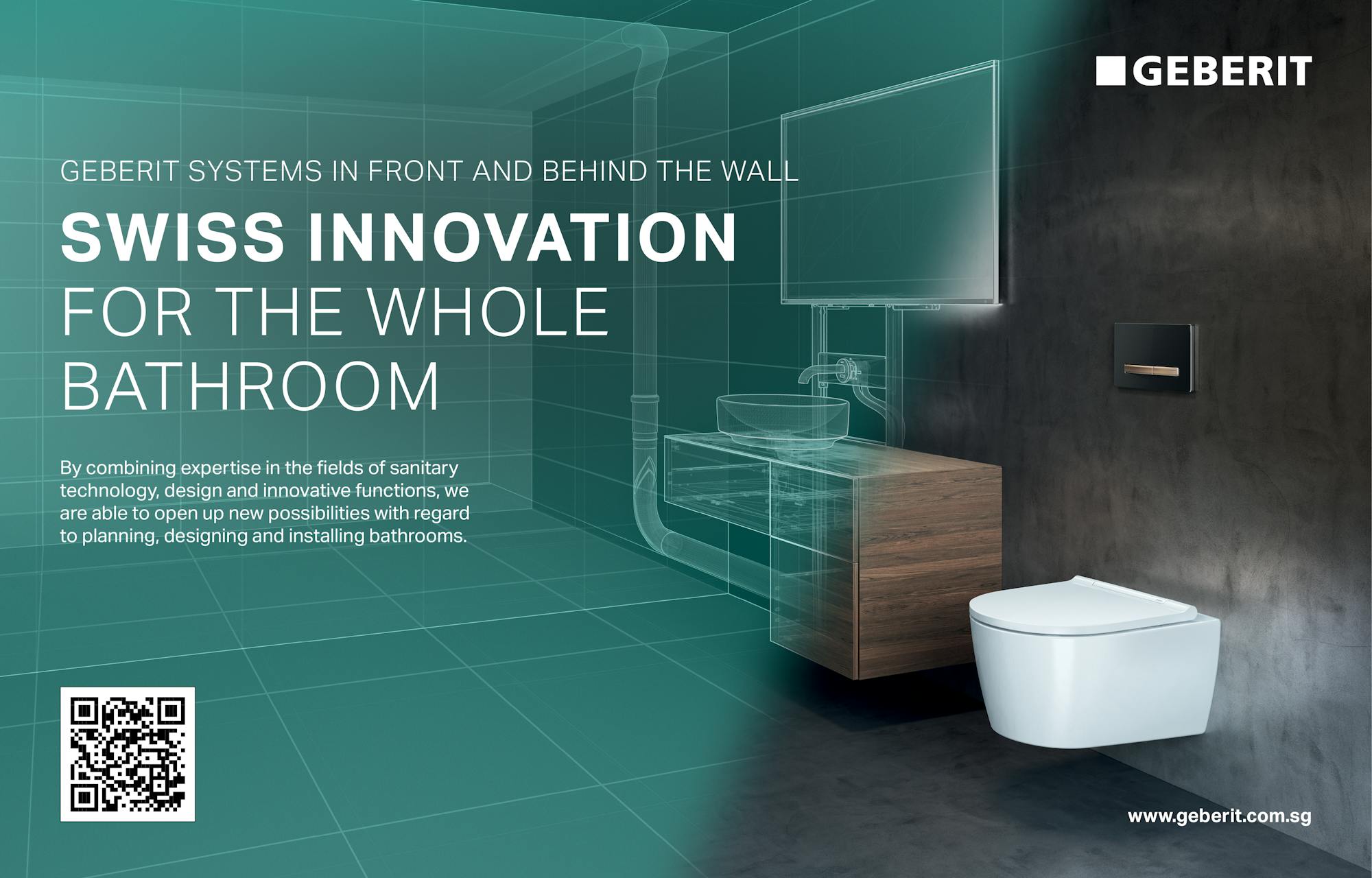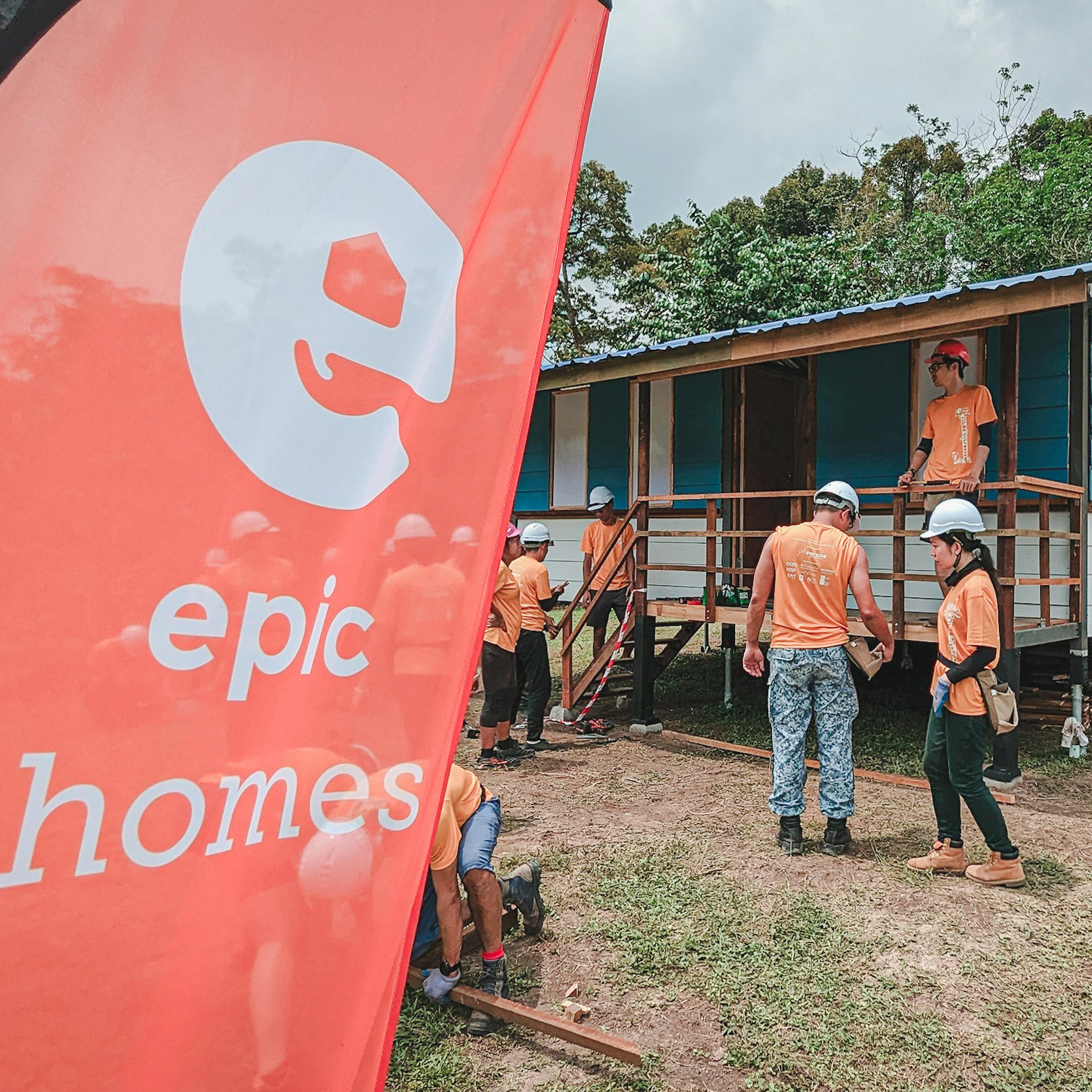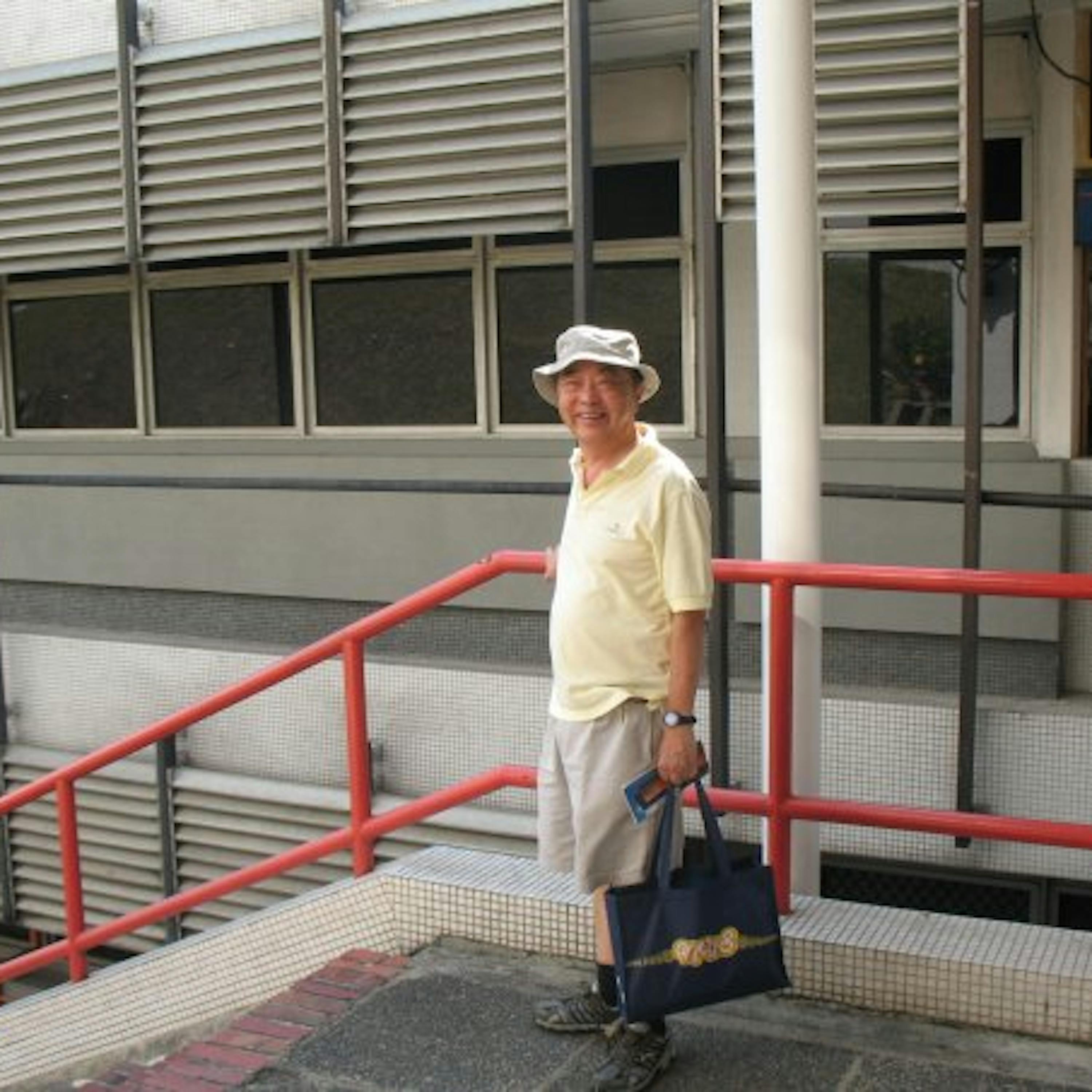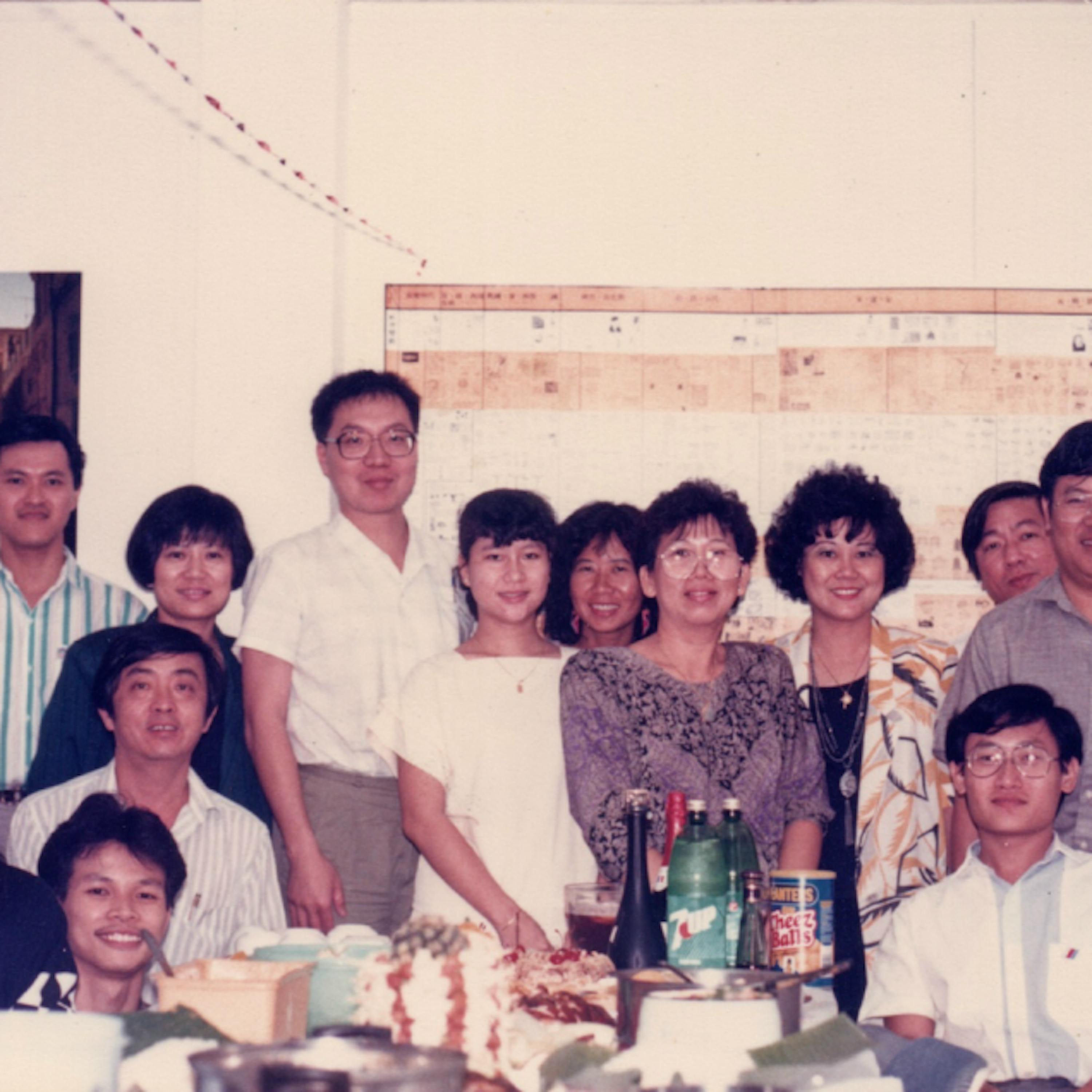WAF Launch
Paul Finch – Founder and Programme Director of the World Architecture Festival Antoine Besseyre Des Horts - Leader at LIXIL Global Design, Asia in conversation with: Ar. Razvan I Ghilic-Micu and Ar. Ronald CT Lim, Chief Editors, The Singapore Architect
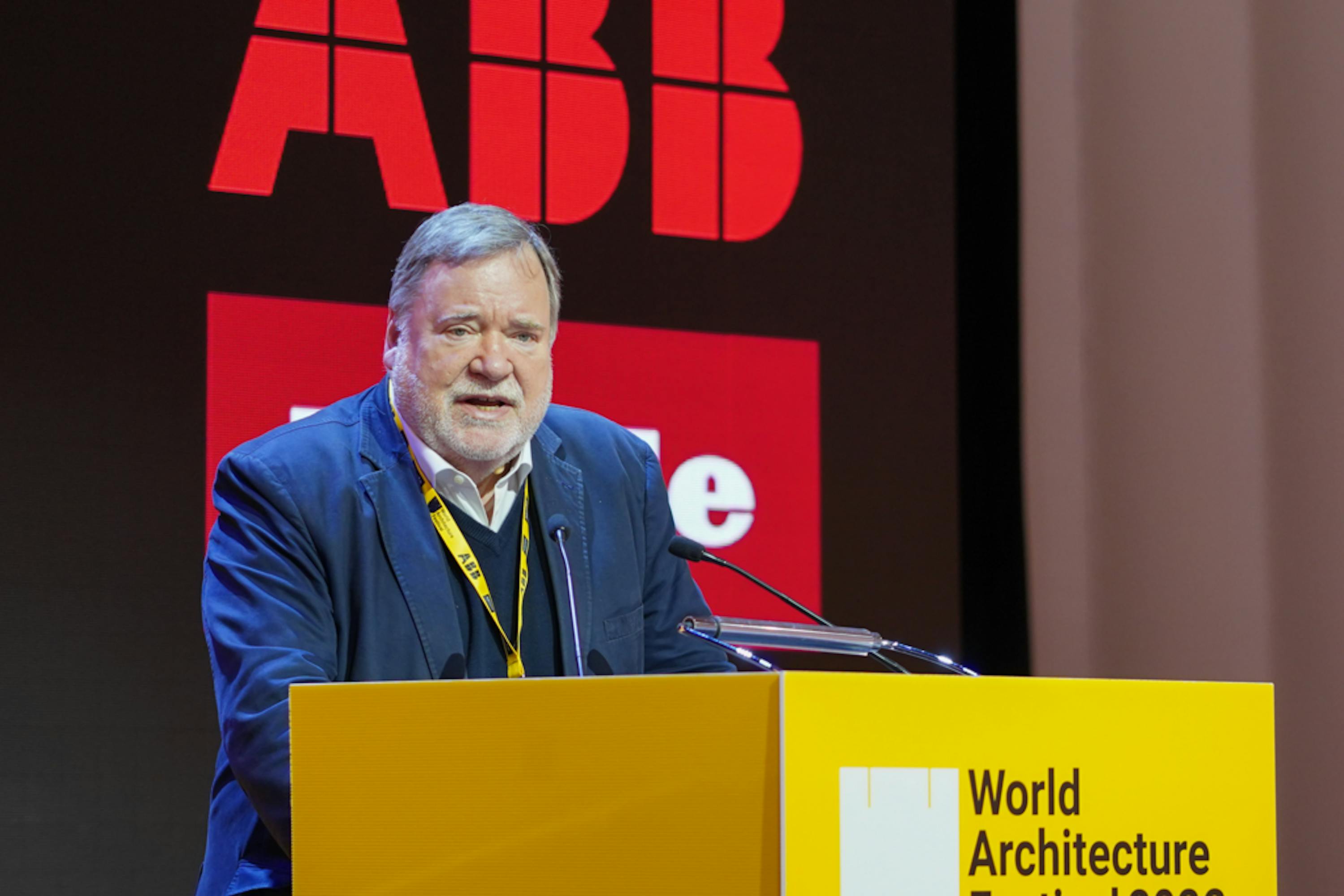
RGM: To kick it off, let’s start with the theme. We love short and incisive words as themes for festivals. "Catalyst" seems to have these qualities. How did this theme come to be, and what does it mean to you, especially as the festival is returning to Singapore in 2023.
PF: Well, the honest answer is that the theme each year, tends to come out from a series of conversations between myself as the Program Director and Jeremy Melvin, the WAF Curator. And usually, by the time that we are doing one event, there is an idea coming to mind about what the next event might be. So last year the theme was “Together” as during the pandemic we have not seen anyone at WAF for three years. We wondered how architecture and design change as a result of rethinking the implications of spatial relationships: whether it’s us four sitting around a table, 800 people in a cathedral, or 80,000 people in a football stadium. It is really interesting how the notion of “togetherness” changes from intimate to collective, to hyper-scale.
So we like the single word.
And we've been talking about two ways in which architecture is influencing change. One is the design of certain cultural buildings, for example M+ by Herzog De Meuron in West Kowloon, The Culture Shed at Hudson Yards in New York City by Diller Scofidio+Renfro or Factory International by OMA in Manchester. Architects are responding to a new cultural condition where instead of observers gazing on static objects stuck on walls, there is now an expectation of performance, fluidity and interaction between place and people. Singapore’s Art Science Museum is good example of that in contrast to the National Gallery due to inherited conditions and mission.
We thought this aspect was interesting: the way in which that architecture could help or hinder the possibilities of relatively different cultural experiences within spaces. So if this is happening on one hand at the level of interior spaces, what is happening on the other hand with the synergy that is being created in relation to its own neighbourhood?
In that case, it could be that the cultural project becomes a catalyst for regeneration, redevelopment or rethinking in some way. We were conscious that strictly speaking, a catalyst is an accelerator. It's not something that does something new. It takes something new, and makes it go faster.
ABDH: And that's what we're seeing already happening. There is a stronger focus. We know these big phenomena like urbanization, health and wellbeing, sustainability. There has been a recent tipping point which brought them into real focus as priorities. And this is where the Lixil Group saw ourselves incredibly aligned with the theme and priorities championed by WAF. We go beyond supplying products, as our real focus is on people and improving their lives. Accelerating positive change by design, catalysing the right partnerships and being part of the conversation at the very beginning, so we can make the right kind of impact.
PF: Being back in Singapore is also meaningful. In a sense the history of SIA (Singapore Institute of Architects) is the history of Singapore. The acceleration of housing production from the early post-independence years, and the ways in which architecture and construction ideals have played through time, at least perceived from a global perspective it looks like a phenomenal vision and experience, which is still ongoing.
I think there is a sense that Singapore’s trajectory, from making new land to reconnecting into nature is a model experimental ground for testing urbanism, liveability and design ideas.
RL: I would like to probe this a little further, as just now you were mentioning the way cultural projects can at least like spur some kind of regeneration in their immediate context. So perhaps I’ll ask it as two related questions. Firstly, outside of marquee cultural projects, which tend to be outliers in terms of budget and audience, most architecture is rather modest and meant to provide basic shelter and amenity. How is this being factored into the conversation? And secondly, speaking of acceleration which seems to imply the production of more faster – there is a school of thought that a regenerative future requires a slowing down, if not a cessation of some activities. I would love to elicit a contrarian response and get your thoughts on this.
PF: I don't think that a catalyst necessarily means that everything is speeding up, and you're getting more of something. For example, let's take the slow food movement. Now, the catalyst for slow food was an objection to fast food. And the almost philosophical attitude was that we don't believe that anything assembled within minutes in a global fast-food chain outlet can beat something that’s taken several hours to prepare in an earthenware pot.
So while the speed and volume question is really interesting, I think a catalyst could result in more faster, better, cheaper or more faster, better, worse. But it doesn't necessarily have to.
For instance, I think Singapore is quite a fast city. And entire focus of the URA (Urban Redevelopment Authority) in some ways, has been on local improvement and connectivity, allied to health and wellbeing, cycling, walking, running, and connecting nature through parks and trails around the island. Design is the active catalyst of achieving that. So an aesthetic prompt – the city in nature – creates the catalyst, which is the design of the linked network.
ABDH: And we were talking about that gradual transition of Singapore from Garden City in the 1960’s, to City in A Garden and the future direction of City in Nature. This is a really interesting trajectory that without a doubt has had several rounds and catalysts that propelled the vision forward and changed it.
RGM: Speaking of catalysing change and the various speeds at which it happens, my observation is that sometimes you have to go slow in order to be fast. What I mean by that is the relative time-scales and milestones of change. And since you mentioned the URA, it is remarkable how every five years a new masterplan builds on previous work, and continually looks 20 to 50 years into the future. So by putting big yardsticks in the ground, the entire country then has the agility of accelerating, decelerating or shifting priorities as needed to achieve these goals as early as possible and pivot if needed.
And as most our current goals are centred around decarbonisation and regenerative development, I’m curious to hear more about your approach to curating or instigating sustainability conversations during the festival. How do you intend to avoid tokenism and greenwashing in the selection of speakers and works showcased?
PF: In a sense, by listening to what it is that people are saying about their projects you realise that it is already now automatic to get some reference to why certain materials are being used – most frequently for carbon reasons, rather than aesthetic. I think that has demonstrably started to happen quite a long time ago.
If I were cynical about this, I would say that architects since the Modern movement started to be perceived as failing in certain important respects in relation to ground plane, urban design, and general ecological matters. There have been a few developments over time, like High-Tech Architecture that tried to investigate matters like new materials, although at times it all verged on a functionalist polemic based on dubious material science. And although Ken Yeang has been speaking about this approach for half a century, only now we now see a rise in Biophilia as the latest form of modernism, which is all related to carbon and climate. We are now in the fortunate position of being able to, because we now know what not to do, so it’s just a question of how long it will take us to get there and how we can catalyse this approach. So inherently the authenticity of the conversation is much more palpable and more informed than ever before.
RL: Are we at a point where we are starting to ask ourselves whether building a building at all is bad for the environment and the planet? WAF is a festival that celebrates very beautiful buildings and the craft of architecture. How do we reconcile that with the extractive reality of creating architecture?
ABDH: Perhaps I can answer this by highlighting a few past projects awarded in South-America, centred around the utilization of water, and how to move it in an efficient way to facilitate sustainable agriculture. So WAF is prominently celebrating impactful solutions beyond the built outcome, or re-discovering older methods that can be re-invented in a contemporary context.
PF: And to build on this as directly as possible, I wanted to make a reference to Buckmister Fuller and his great question to Norman Foster: “How much does your building weigh, Mr Foster?”
I think you need to look at all these things in the round. Let’s say your proposition was that it would benefit the Earth if we never made another building. If you start doing that analysis, then it would also benefit the world if nobody flew anywhere. And it would benefit the world if nobody had any children. How far do you want to push that argument?
Some countries did have policies limiting their population, which backfired and eventually had to be abandoned. So if the population of the planet will continue to grow, and someone turns around and imposes a moratorium on building any more housing, how would that do us any good?
To me the real question is: can you make construction as close to zero carbon activity as possible? Can you make every element of it as close to zero? And whatever little carbon is further produced, can you mitigate?
I think we will only get out of our problems through creativity, so design plays a critical part. This is paired with the demonstrable movement towards more retrofit. In other words, not the willy-nilly destruction of office buildings after 25 years in operation, or the assumption that if you can get your investment money out in three years, it doesn't matter how much energy the building is using. These are all bad habits still present in certain markets, and I think all these will have to change.
I founded the Retrofit Awards at the Architects Journal a decade ago. I don't regret it for a moment, and I never regarded them as in any sense antithetical to the idea that we should have new buildings. I absolutely disagree with that. But I do agree with the adage that the city that stops building is a city that's dying. We just need to build better and retrofit better and possibly make buildings carbon positive.
ABDH: Maybe the complement that view from the standpoint of a product widely used in daily hygiene by millions of people around the world, we have a very holistic approach to the entire ecosystem of production, energy, manufacturing, jobs creation all the way down to enabling lifestyle improvements for communities that have never been afforded those privileges. So the question we are all facing as designers is: How can you provide products and solutions that are environmentally neutral, that encourage sustainable behaviours but at the same time do not compromise on the experience? That is the real question here, that designers have to tackle in its complexity.
PF: And to bring it full circle, perhaps paraphrasing Bob Maxwell’s view on capitalism vs socialism – he looked at it as two different mechanisms that appear completely opposite in how they determine outcomes. Very much like the accelerator and the brake of a car, they need to be used alternatively and together, however the bigger question is: whose hands are on the steering wheel and where are we heading? I like that way of thinking about the world. That is a designer’s approach to the issue: it is not what you’ve got, but how you are using it, what direction you are going and why?
You might need to accelerate to get there, or you might need to put your foot on the brake because you are going in the wrong direction. And designers are best placed to balance these views, because they’re lateral thinkers.
RGM: Speaking of this, how do we then encourage architects, or designers at large to really focus less on objectifying the outcome of their work – the product, the building, the space – and focus more on the context that requires it, and the impact it has on the environment and communities it ends up creating?
PJ: Great point! And it's all about whether you are interested in outputs or outcomes. If you've got a product manufacturer, like Grohe for instance, these are long term relationships, because the process is the product.
And I think this is certainly a problem for architects with buildings where their relationship with the building, the client or the owner suddenly gets severed at the end of the project. On one hand I understand that because if you're not contracted to take an interest in the building once it’s built, and all you've got is liabilities, and no fee – what motivates you to do so? But most good architects go back and find out whether the outcome matches the design aspirations.
RL: In closing, to reflect on 15 years of the World Architecture Festival that you have founded and launched in 2008. Can you offer us a reflection on how the festival has evolved since? What are some pertinent shifts in the conversations occurring at the festival?
PF: Well, I think this is going to sound a bit obvious, but I think first would be the increasing realization that carbon and climate must be actively addressed in every project. To me the best definition anyone has come up with is Alex Gordon the RIBA President, in 1972. Before the oil crisis, he said that architecture should be about “long life, loose fit and low energy”. I would add “low carbon” to that. Personally, I think that’s the best possible motto, and increasingly you see typology being questioned. If a building should be another thing altogether, how easily can that be achieved? Typically, the answer would be “nothing, without massive difficulty”. But now that question gets asked much more frequently, and it can become a substantial catalyst for change.
I am very optimistic about architecture and design, and the importance they play in reinventing the future. All the wonderful projects that are submitted and shared openly are a constant refresher. To me WAF continues to be an event that architects attend because it reminds them about why they fell in love with architecture in the first place.

